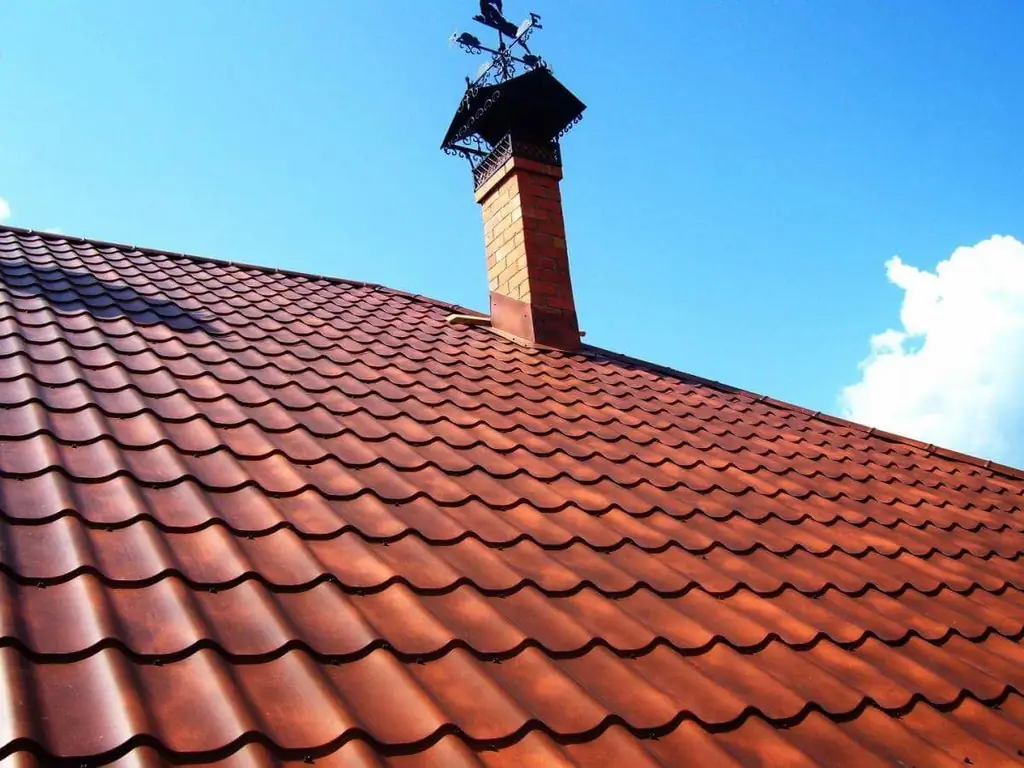
Table of contents:
- Author Bailey Albertson [email protected].
- Public 2023-12-17 12:53.
- Last modified 2025-01-23 12:41.
Metal tile or soft roof: all the pros and cons for choosing a coating

Tiles and soft roofs are two different roofing options. Each material has a number of advantages and disadvantages, and their knowledge will make the choice easy and quick. To clearly determine the features of each coating, you need to compare them according to different criteria.
Content
-
1 Soft roofing and metal tiles: comparison criteria and characteristics
- 1.1 Comparison of metal and soft roofs at cost
- 1.2 External characteristics
- 1.3 Installation technologies for bitumen and metal tiles
- 1.4 Material parameters: dimensions and weight
- 1.5 Sound insulation properties
- 1.6 Service life of materials
- 1.7 Scope
- 2 Reviews about metal roof tiles
- 3 Reviews about soft roof
Soft roofing and metal tiles: comparison criteria and characteristics
Metal tiles are produced in the form of steel sheets with a relief surface resembling clay tiles. Each sheet is covered with a colored polymer layer that protects the metal from corrosion. Affordable cost and a number of high characteristics make this coating in demand for the arrangement of roofs of private houses.

The metal tile is easy to install and provides the house with a presentable appearance
A soft roof is a covering, consisting of flexible flat elements (shingles), which are made of bitumen applied to fiberglass and covered with several layers of bitumen-polymer mass, basalt dressing and a protective film. The multi-layer structure gives the shingles strength and reliably protects the roof from leaks.

Flexible shingles have a multi-layer structure and are lightweight, airtight and aesthetically pleasing coating
Both of these options are well-deservedly popular with private home owners. It is worth considering that each material has certain properties and characteristics, and the choice is based on many factors, each of which has a different significance for different people. Comparison of metal and soft roofing allows you to determine the most suitable roofing material in each case.
Comparison of metal and soft roofs at cost
Flexible bitumen shingles are made of several layers, for which there is a special technology and many manufacturing operations are carried out for a thorough bonding. Due to the high labor costs, the cost of shingles is higher than the metal version, the production of which involves the formation of rolled steel and the application of a protective coating with a complex composition to the sheets.

Metal shingles differ from soft roofs in their smoothness and strength
It is also worth considering that for the installation of a soft roof, additional elements are required: underlayment, continuous sheathing, etc. This leads to an even greater increase in the total cost of a roof with a shingle roof. Metal sheets, on the other hand, do not require special changes to the standard structure of the roofing pie, since the installation is carried out on a rare lathing laid on top of a waterproofing film and rafters.
External characteristics
Bituminous shingles and metal coating differ significantly in appearance. The first material has a rough surface and is made in the form of flexible ribbons, the upper edge of which is even and straight, and the lower one is a wavy line or has some other shape. By stacking such elements one after another, you can create a beautiful mosaic-like surface.

Bituminous shingles are rough and look like a mosaic
The metal version of the tile has a smooth and slightly glossy surface. The material is presented in the form of sheets, the working side of which has a relief wavy structure. The shape of the bends for different brands of metal tiles may differ, which also affects the appearance of roofs covered with such elements.

The metal tile is painted in all basic colors according to the international RAL catalog, so when using it, you can choose the coating for the general design of the building or the entire area
The color palette of metal tiles is much more diverse than that of bituminous elements. At the same time, a roof covered with flexible materials can be more beautiful than with metal sheets. This is due to the fact that soft ribbons of several colors can be alternated and combined, getting a bright and original result.
Installation technologies for bitumen and metal tiles
Bituminous and metal tiles differ not only in appearance and composition, but also in installation technology. This criterion must be taken into account when choosing a material for roofing. Features of the stages of laying metal tiles are expressed in the following:
- on the crate, laid on top of the waterproofing film and rafters, sheets of metal are attached using roofing screws;
- in the area of the ridge, valleys and chimney, special corner additional parts are fixed;
- the joints of the sheets are sealed with a special sealant or sealant.

The length of the sheets of metal can be selected to fit the size of the slope, so even large roofs overlap it rather quickly
Installation of bituminous tiles involves the arrangement of a continuous crate of OSB sheets or boards located close to each other. Next, a lining carpet is laid, and only then the flexible tapes are fixed with bitumen mastic. The gaps and seams between the tapes are carefully waterproofed, so the work requires precision and time-consuming. At the final stage, a drainage system, a ridge, and valleys are installed, which are made of metal with a polymer coating.
Material parameters: dimensions and weight
Manufacturers produce metal tiles in the form of sheets, the length of which can be up to 4.50 m, and the width - up to 1.19 m. The weight of one square meter of the coating reaches 5 kg. It is inconvenient to lift such elements onto the roof and mount them alone. For small roofs, smaller sheets are used, picking them up exactly along the length of the slope.

The installation of metal tiles is almost impossible to carry out alone, since the sheets are large and heavy
The standard length of shingle shingles of bitumen shingles is 1 m, and the width is 33.7 cm. Such parameters allow you to lay the roofing material yourself, but the preparatory work, consisting in the installation of OSB sheets and underlay carpet, is rather complicated and requires assistants. Despite its relatively small size, 1 m 2 of battens can weigh up to 12 kg.
Sound insulating properties
Sheets of metal tiles have a wavy shape and are made of solid material. As a result, the sounds of rain and wind are clearly audible under the roof, which is due to the low soundproofing ability of the metal. This is a negative factor if an attic roof is being installed, the room under which is residential. It is possible to compensate for the low sound insulation of metal tiles with a thicker layer of insulation - from 20 cm.

Laying a thicker layer of insulation improves the sound insulation of a roof covered with metal tiles
To equip a roof with bituminous tiles, there is no need to install special sound-absorbing layers, since the material itself is distinguished by good sound insulation. Therefore, flexible elements are used to cover both insulated and cold roofs.

Differences in the roofing cake for flexible shingles are in the need for a continuous sheathing, the possibility of laying a thinner (10-15 cm) layer of insulation and in the presence of a special lining carpet
Sound insulation properties play an important role when the space under the roof, that is, the attic space, is residential. In other cases, in the rooms of the house, the pounding of rain on the roof is not audible, since the ceiling of the attic drowns them out.
Service life of materials
Each building and roofing material has a certain service life, expressed in service life, after which the material significantly loses its characteristics. This is characteristic of both metal sheets and shingles for the roof. The service life of shingles is from 25 to 50 years, depending on the type of protective coating. Pural is the most persistent, plastisol is also quite effective.

Pural roof tiles have the longest lifespan and look almost like real ceramic tiles
The service life of bituminous shingles without loss of characteristics is 30-50 years. After this period, the material, under the influence of climatic factors and ultraviolet radiation, loses its color, resistance to temperature changes and tightness. The durability of any material is influenced by the quality of its structure, so it is worth paying attention to the products of well-known and well-proven brands.
Application area
One of the criteria for comparing metal and flexible roofing is the scope of these materials. These roofing coverings have in common that they are used with a minimum slope of 12-15 o.

Bituminous shingles are suitable for difficult roofs with a slope of at least 12 degrees
Soft roofing material is suitable for roofs with complex architectural shapes, as it is small in size and elasticity and allows you to carefully shape the bends of multi-slope structures. The volume of material residues does not exceed 3-5% of the total. The metal tile is usually mounted on simple and even pitched roofs. Fastening sheets to complex structures with many corners and bends will lead to the need for frequent trimming of the material, increasing the amount of waste and the risk of edge damage and further metal corrosion.
Reviews of metal roof tiles
Reviews of a soft roof
It is possible to choose the best roof covering taking into account many factors, climatic operating conditions play an important role in this. Both metal tiles and bituminous material have their pros and cons, which must be taken into account when choosing.
Recommended:
The Microwave Does Not Heat, But It Works, What To Do - The Main Causes Of Breakdown, Features Of The Repair Of Rolsen, Samsung And Others, As Well As User Reviews
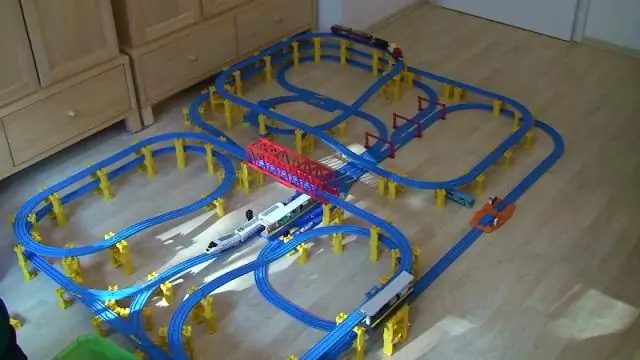
What to do if the microwave works, but does not heat food: information on possible causes of breakdown and tips for elimination
The Structure Of The Roof Of A Wooden House, Including The Main Nodes Of The Roof, As Well As What Material Is Better To Use
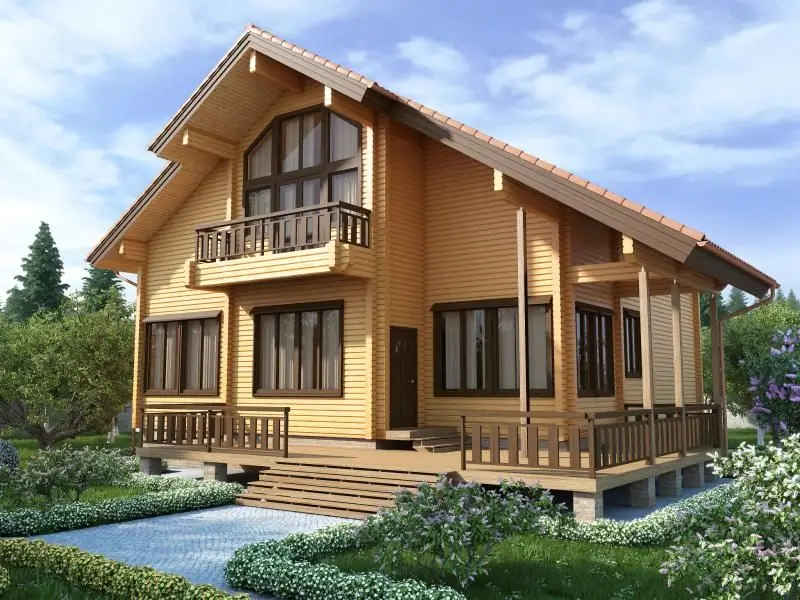
Roof device of a wooden house. The main units, elements and types of roofing. Insulation, decoration, repair and replacement of the roof of a wooden house
Repair Of A Soft Roof, Including A Description Of Its Main Stages, As Well As Material And Tools For Work
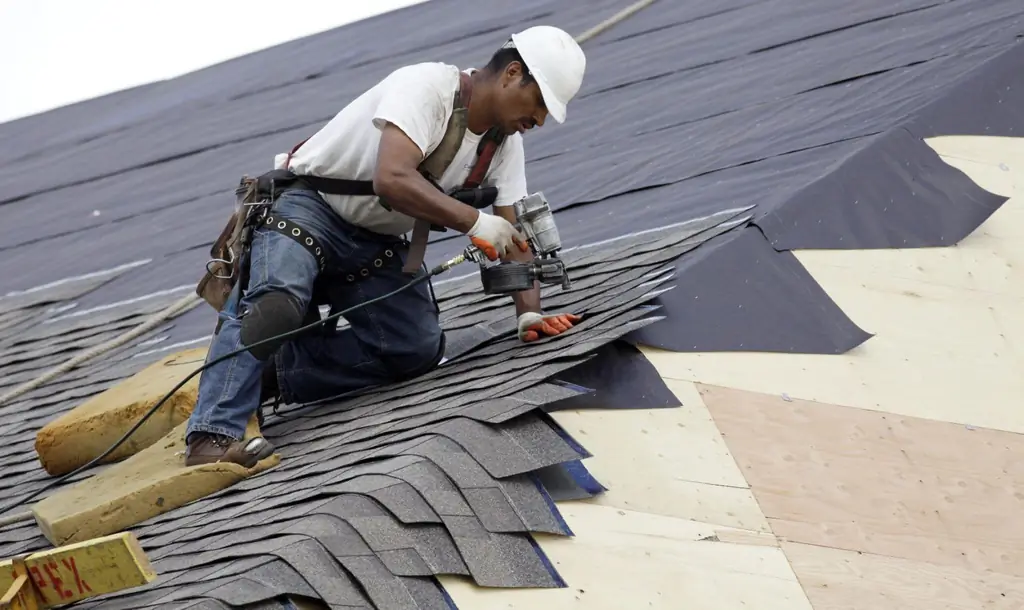
Diagnostics of the condition of the soft roof. Repair types and their main features. A brief overview of roofing materials and recommendations for their selection
Which Is Better - Metal, Ondulin Or Corrugated Board, Main Characteristics, User Reviews

How to choose roofing material. Which is better: ondulin, metal or corrugated board. The pros and cons of each of these roofing materials
Roofing Cake For A Soft Roof, As Well As The Features Of Its Structure And Installation, Depending On The Type Of Roof And The Purpose Of The Room
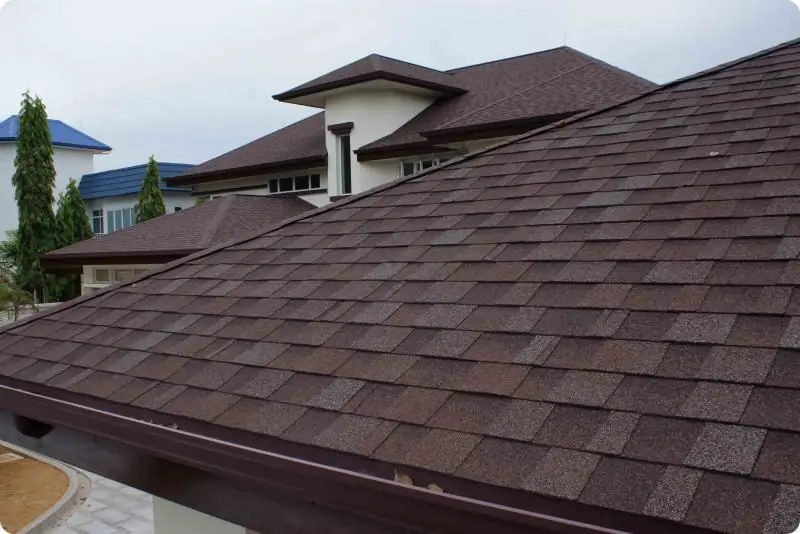
What is a cake under a soft roof. Features of its device and installation. How to arrange a roofing cake from roll and piece materials
